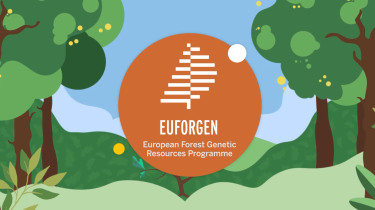Major upgrade launched for European Information System on Forest Genetic Resources

A tool enabling detailed monitoring and reporting on forest genetic resources (FGR) in Europe has undergone a major upgrade, which will vastly enhance the user experience and the results it can offer. The European Information System on Forest Genetic Resources (EUFGIS) has been officially relaunched, introducing a modernised interface, enhanced functionalities and enriched datasets. The renewed portal (eufgis.org) is now publicly accessible to conservationists, researchers, policymakers and all interested stakeholders.
Established in 2010 under the European Forest Genetic Resources Programme (EUFORGEN), EUFGIS is the only transnational information system dedicated to FGR in Europe. As of November 2025, it provides harmonised, geo-referenced data on more than 3,500 Genetic Conservation Units (GCUs) representing over 100 tree species across 35 European countries. All GCUs included in the system meet common pan-European minimum requirements for dynamic genetic conservation units, ensuring a high level of comparability and reliability.
EUFGIS has become a cornerstone for monitoring and reporting on the conservation of forest genetic resources. Its data support Indicator 4.6 of the Forest Europe process, and have contributed to major assessments such as the State of Europe’s Forests and the global State of the World’s Forest Genetic Resources. The system also serves as a reference platform for conservation planning, identifying gaps in genetic conservation efforts and supporting the development of pan-European conservation strategies.
Work on upgrading EUFGIS started in 2021 through the EU-funded FORGENIUS project. Researchers and programmers have worked together to introduce modern technologies, a new user interface, and the integration of complementary datasets. These include linkages with climate and environmental databases, remote-sensing products, and newly collected genotype and phenotype data for 23 tree species. The enhanced system enables more precise characterisation of GCUs and strengthens Europe’s capacity to conserve forest genetic diversity under changing environmental conditions.
National Focal Points in participating countries maintain and regularly update the information in EUFGIS. Since it was established, European countries have progressively adopted the “pan-European minimum requirements for dynamic genetic conservation units of forest trees”, a framework that emphasises maintaining evolutionary processes within populations to secure their long-term adaptive potential. All characterisation data will be available through the system on a long-term basis.
In addition to expanded climatic and environmental descriptors, the upgraded system now integrates new phenotypic and genetic data generated by the FORGENIUS project following innovative and standardised protocols. These datasets are being progressively released on the platform. One example is the Admixture Index, which provides information on the proportional ancestry of detected gene pools and supports more refined management of genetic resources.
EUFGIS remains a central tool in the work of the EUFORGEN and continues to be managed by its Secretariat. The upgraded platform reinforces EUFGIS’s role as Europe’s primary documentation, monitoring and reporting system for forest genetic resources, supporting both national and international commitments in sustainable forest management.

Admixture index of Abies alba as displayed in the new EUFGIS.
The admixture index (chr_AdmixIndex) is a measurement of the extent of admixture of individuals in a population belonging to different gene pools when individuals from two or more parental (ancestral) populations interbreed. The gene pool is the set of all genes, or genetic information in a group of individuals.
Data: FORGENIUS


